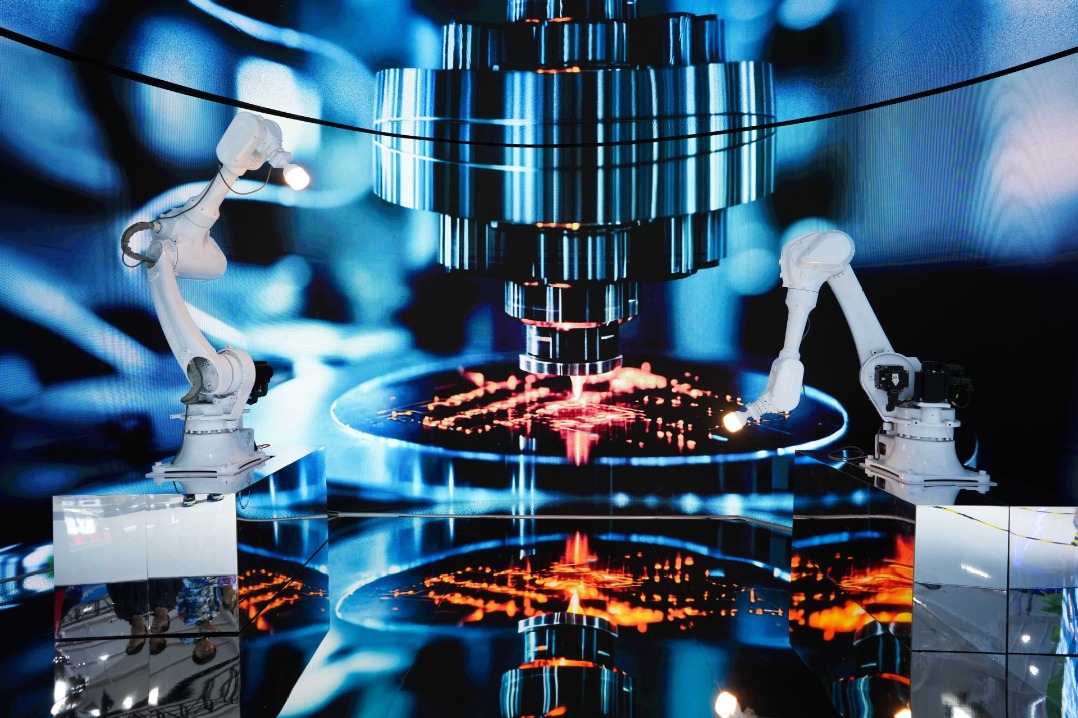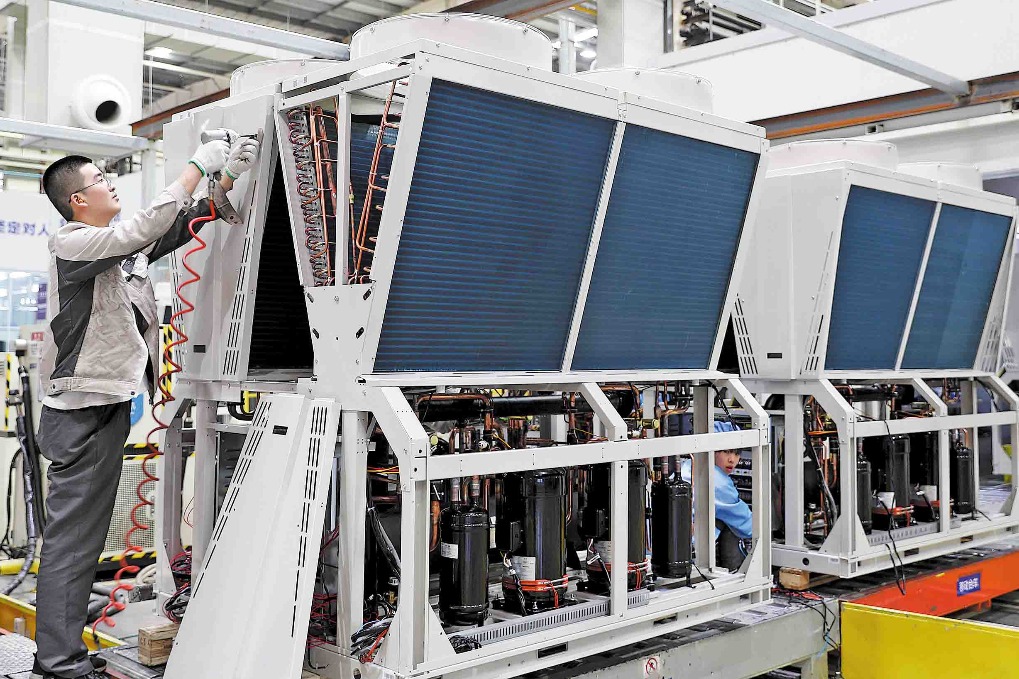Humanoid robotics lending hand to China's innovation-led drive


BEIJING - As the sun rises over southeastern Beijing's suburban E-Town, a captivating scene unfolds. Stretching slim arms and legs, jogging at a precise pace and practicing Tai Chi, the participants are not typical gray-haired people. They look stylish, energetic, and like human beings.
Yes, they aren't our kind -- they are humanoid robots.
As the rising stars in China's new innovation-fueled growth engines known as new quality productive forces, these human-like machines are flexing smart muscles to play a big role in turbocharging the country's long-term growth.
Nascent yet promising industry
The black, metallic humanoid robot, named Tien Kung, is the brainchild of Beijing Embodied Artificial Intelligence Robotics Innovation Center, or HUMANOID.
Established late last year, the platform has already made a splash in the cutting-edge field globally with Tien Kung's debut in April.
Measuring 1.63 meters in height and 43 kilograms in weight, Tien Kung can maintain a steady running speed of 6 kilometers per hour. It has achieved the world's first anthropomorphic running of a full-size fully electric-driven embodied intelligent robot.
"It's a stride indeed in terms of technological progress," said Rick Xiong, the center's general manager and an industry veteran with over two decades of experience in the sector.
Featuring a sophisticated combination of state-of-the-art technologies such as artificial intelligence (AI) and robotics, humanoid robotics is an emerging high-end industry gaining global attention and investment. Xiong believes it's going to become a trillion-US dollar industry with the potential to "revolutionize how we live, work, and interact."
Xiong envisions a future where humanoid robots could care for the elderly in nursing homes or seamlessly perform tasks in automobile factories. "Impossible? It's already a reality in the making."
In China, humanoid robots are beginning to venture out of labs and expos into workshops. Industrial giant UBTECH, which also has an office near HUMANOID in the ZGC E-Town International Robot Industrial Park, recently introduced its products in a smart automobile plant in east China, where they assist workers in carrying auto parts.
Xiong forecasts that humanoid robotics will be applied on a larger scale at home in the next three to five years.
An industrial report co-compiled by UBTECH and other partners predicts that the market size of humanoid robots in China will reach some 2.76 billion yuan in 2024 and is expected to reach 75 billion yuan by 2029, accounting for about a third of the global total. By 2035, the market is projected to expand even further, with a potential size of 300 billion yuan.
Right timing, place and people
Xiong attributed the fast growth of HUMANOID and the domestic industry to a nurturing ecosystem for humanoid robotics in China, citing the country's solid high-end manufacturing sector, a galloping AI market and a growing range of application scenarios.
China is home to the most comprehensive industrial system in the world, with a production and manufacturing system that is both globally unparalleled in scale and diverse in its range of sectors. It is also the largest market for robotics applications worldwide.
In E-Town, where HUMANOID is located, there are over 110 robotics companies, forming a sound industrial chain system covering robotics core components, complete machines, and applications.
With AI development flourishing in the world's second-largest economy, more than 4,500 companies are racing to enhance technologies, positioning China at the forefront of the global AI market. Complementing these industry advances is a supportive government policy framework.
Local governments have offered a set of supportive policies to help firms like HUMANOID grow. Nationally, the Ministry of Industry and Information Technology last year rolled out a guideline to expedite the industry's development.
To sharpen the edge of future industries including humanoid robotics, China will launch a series of scientific research projects, establish a number of incubators, support certain regions to explore and develop application scenarios and cultivate more industrial high-fliers, Minister of Industry and Information Technology Jin Zhuanglong told a press conference in July.
China's top economic planner also issued a document in June, encouraging the development of humanoid robots based on large-scale AI models to enrich consumption scenarios.
"There are combined efforts to shape the future in our favor," Xiong said. "We have the right timing, place and people to accelerate the humanoid robotics push."
Technology and teamwork
While staying upbeat on the nascent industry's outlook, Xiong cautioned against an irrational rush to jump onto the bandwagon.
HUMANOID is the first of its kind in the country, and within a year many Chinese tech hubs like Shanghai, Shenzhen and Wuhan have set up similar centers or alliances to pool resources to push the industry ahead. A throng of companies are also making forays into the burgeoning market.
While the West witnesses deep-pocketed industry giants dominating the robot landscape, China is characterized by a proliferation of small to medium-sized enterprises striving to navigate the competitive terrain, Xiong observed, adding that the latter might lack enough capital and technology reserves to withstand market risks brought by heated homogeneous competition that might lead to redundancies.
In a key policy meeting held last month, China's top leadership underscored the importance of developing new quality productive forces in line with local conditions.
"Technology is the major bottleneck checking the industry's development," Xiong said. "It takes time, money, and most importantly teamwork to make real technological breakthroughs."
HUMANOID will launch a versatile embodied intelligence body platform empowering the application of related technologies later this year, and like Tien Kung, it will be open to industry players at home and abroad to facilitate the whole industry, according to Xiong.
The company is also busy preparing to participate in the upcoming World Robot Conference to be held in E-Town. The event will see industrial heavyweights from countries such as the United States, Japan and Germany showcase the latest progress in the industry, with more than 20 humanoid robots set to make their debut.
Xiong is eager for the exchange of ideas and experiences with global peers. "We are always open to global industrial cooperation," he said. "Together, we can make the unreal real."




































